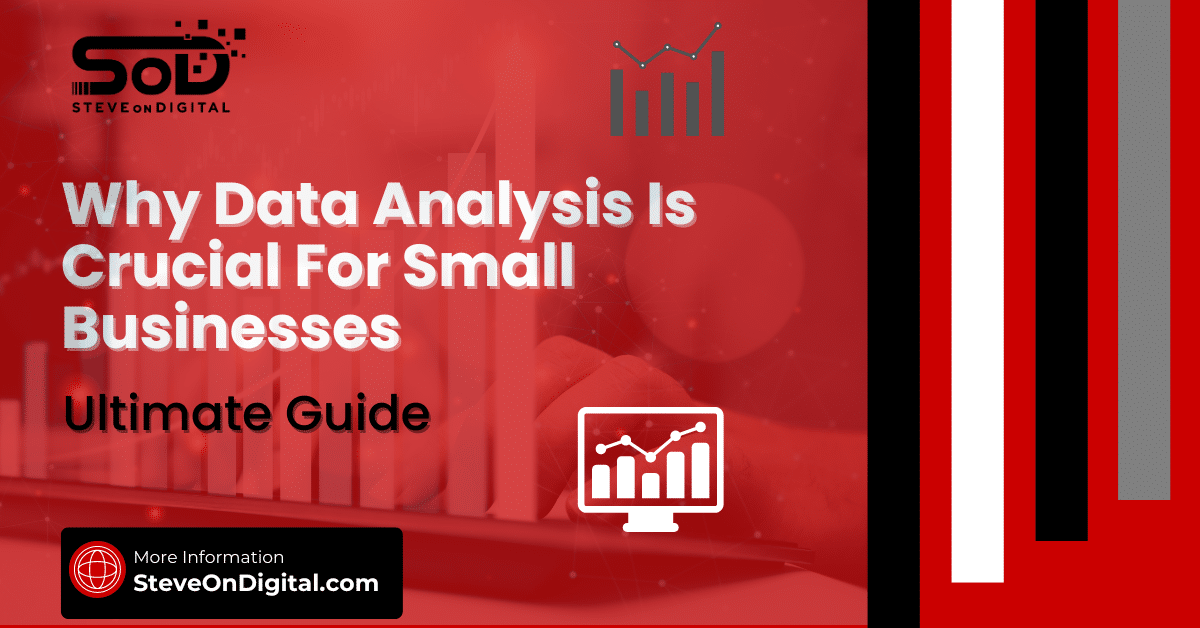In today’s ever-evolving global economic landscape, small and medium-sized enterprises (SMEs) face a myriad of challenges that can significantly impact their sustainability and growth.
The importance of effective debt management strategies cannot be overstated, especially considering the recent global economic turbulence and the ongoing adjustments from the COVID-19 pandemic.
As Steve Johnston, drawing from my extensive experience in digital transformation and financial management, I’ve seen firsthand how crucial managing debt is for SMEs to navigate these uncertain times successfully.
A report by the World Economic Forum in December 2022 highlighted that 67% of SMEs worldwide are fighting for survival amid warnings of a global recession.
This statistic underscores the vital role that debt management plays in ensuring the continuity and growth of these businesses.
Furthermore, the IMF’s World Economic Outlook Update for January 2024 indicates a projected global growth of 3.1 percent in 2024, with risks to global growth being broadly balanced.
The update emphasizes the potential for a soft landing, given current economic conditions, including moderating inflation and steady growth.
These insights provide a backdrop against which SMEs must strategize their debt management to align with the global economic rhythm.
Understanding Your Debt Situation
The first step in effective debt management is accurately assessing your debt situation.
This involves identifying various types of debts your business may have, such as short-term vs. long-term debts and secured vs. unsecured debts.
It’s crucial to understand the nature of each debt to prioritize them effectively. Drawing from my experience, I recommend SMEs conduct a thorough audit of their debts, categorizing them by urgency and impact on the business.
This approach is not just about numbers; it’s about understanding the implications of each debt type on your business’s financial health and operations.
Developing A Comprehensive Debt Management Plan
Developing a comprehensive debt management plan is an iterative process that involves setting realistic debt reduction goals and prioritizing debts.
It’s essential to integrate real-life scenarios and examples from managing SME finances to create a robust plan.
For instance, negotiating more favorable terms with creditors can provide immediate relief and contribute to long-term financial stability.
Debt consolidation and refinancing are also effective debt management strategies that can help SMEs streamline their financial obligations, potentially reducing monthly costs and easing cash flow issues.
From my personal experience working with SMEs, one of the key strategies has been to focus on maintaining a healthy cash flow by managing debt smartly.
This includes consolidating multiple loans into one with a lower interest rate, thus reducing monthly payments and freeing up cash for other critical business needs.
Additionally, prioritizing high-interest debts for payment can significantly cut costs and improve the financial position of the business.
| Strategy | Impact on Cash Flow | Impact on Financial Health |
| Debt Consolidation | Improves by streamlining payments | Enhances by reducing interest costs |
| Prioritizing High-Interest Debts | May temporarily strain but improves long-term stability | Significantly improves by cutting costly debts |
| Renegotiating Terms | Can improve if terms extend or costs lower | Improves by potentially lowering costs |
How Debt Consolidation Benefits SMEs
Debt consolidation is a key strategy for small and medium-sized enterprises (SMEs) aiming to improve their financial health.
By combining multiple debts into one loan with a lower interest rate, SMEs can achieve a healthier cash flow.

This method simplifies monthly payments, making financial management more straightforward and freeing up resources that can be redirected towards growth and operational needs.
For a small business owner juggling various debts, including business loans and credit card debt, consolidation offers a way to reduce monthly costs and manage debt more effectively.
It allows for better cash flow management by ensuring that outgoing costs are predictable and more manageable.
This strategic approach not only helps in managing existing debts but also contributes to the overall financial position of the business, making it a critical component of effective debt management for SMEs.
Strategies For Managing And Reducing Debts
Expense Management Techniques
Managing expenses is crucial for SMEs, especially in times of financial strain.
While it’s tempting to cut costs wherever possible, it’s essential to do so without compromising the integrity and quality of your business.
For example, evaluating and trimming unnecessary overheads can free up funds without affecting core operations.
This might include renegotiating contracts for services like internet or utilities or finding more cost-effective suppliers without sacrificing quality.
Revenue Enhancement Strategies
Boosting sales and exploring new markets are key strategies I’ve used successfully in my business ventures.
Here are a few tactics that have worked:
- Diversifying product lines to meet emerging market needs.
- Expanding into new geographical areas with targeted marketing strategies.
- Improving customer engagement and retention through enhanced service offerings and loyalty programs.
These strategies not only increase revenue but also build a stronger, more resilient business model capable of withstanding financial pressures.
Cash Flow Management
Cash flow is the lifeblood of any SME.
Statistics have shown that a significant number of businesses face challenges due to poor cash flow management, with 25% of SMEs being turned down for funding because of poor earnings and cash flow.
Managing cash flow effectively involves several key strategies:
- Improving invoicing and collections processes to ensure that payments are received on time.
- Efficient inventory management to reduce holding costs and free up cash.
- Utilizing technology to forecast and manage cash flow more effectively.

Implementing these strategies can help maintain a healthy cash flow, which is crucial for meeting ongoing financial obligations and supporting growth initiatives.
Engaging With Stakeholders
Maintaining transparent communication with creditors, suppliers, and customers is essential for managing debt and sustaining business operations.
Here are some practical steps based on my experiences:
- Regularly updating stakeholders on your financial status and plans for debt repayment.
- Negotiating payment terms with suppliers to align with your cash flow cycles.
- Keeping customers informed and engaged through effective communication channels to ensure their continued support.
These practices not only help in managing debt more effectively but also strengthen relationships with key stakeholders, creating a supportive ecosystem for your business.
Interest Rate Tactics For SMEs
Interest rates play a significant role in the cost of debt for SMEs.
Managing these rates effectively can lead to significant savings and contribute to financial stability.
SMEs should prioritize securing loans with the lowest possible interest rates, whether through negotiating better terms with current lenders or refinancing high-interest debts.

Understanding the implications of both fixed and variable interest rates is crucial, as is choosing the right type based on the business’s cash flow and financial outlook.
Additionally, small business owners can explore secured debts, which often come with lower interest rates due to the collateral involved.
Financial advisors can provide valuable insights into this process, helping SMEs to cut costs without sacrificing growth.
By focusing on strategies to minimize interest payments, SMEs can manage their debt more efficiently, ensuring a healthy financial foundation for their business.
Additional Revenue And Funding Options
Exploring alternative revenue streams and financing options is crucial for SMEs aiming to enhance their financial resilience and support growth initiatives.
Equity financing, crowdfunding, and government grants are increasingly becoming vital components of a comprehensive funding strategy, complemented by the rise of alternative lenders.
- Equity Financing And Crowdfunding: Equity financing involves selling a stake in your business to investors to raise funds. This method can be particularly effective for businesses with a strong growth potential but requires careful consideration of the implications of sharing ownership and control. Crowdfunding platforms like Kickstarter and Indiegogo offer another avenue for raising funds, allowing businesses to gather small amounts of money from a large number of people, often in exchange for early access to products or other rewards.
- Government Grants: Many governments offer grants and support programs designed to help SMEs grow and innovate. These grants can provide a crucial lifeline without the need to repay funds or give up equity. However, securing government grants can be competitive and often requires meeting specific criteria and a detailed application process.
- Alternative Lenders: The role of alternative lenders, such as online platforms and fintech companies, is growing. These lenders often provide more flexible lending criteria compared to traditional banks, making them an attractive option for SMEs that may struggle to secure bank loans due to a lack of collateral or a short operating history. The rise of technologies and data analytics has enabled these lenders to offer fast and tailored financing solutions to meet the unique needs of SMEs.
| Funding Option | Pros | Cons |
| Equity Financing | No debt to repay, access to investor expertise | Dilution of ownership, possible loss of control |
| Crowdfunding | Builds community, validates product, no debt incurred | Time-consuming, not guaranteed to reach goal |
| Government Grants | Non-repayable funds, supports innovation | Highly competitive, specific eligibility criteria |
| Alternative Lenders | Flexible criteria, quick funding | Higher interest rates, shorter repayment terms |
Legal And Professional Assistance
Navigating the complexities of debt management and financing options can be challenging.
Seeking professional advice and understanding the legal implications of various strategies is paramount.
- Professional Advice: Consulting with financial advisors or debt counselors can provide valuable insights into managing debt effectively and exploring financing options. These professionals can offer tailored advice based on your business’s specific financial situation and goals.
- Legal Implications: It’s also critical to understand the legal aspects of debt management strategies, including debt restructuring, consolidation, and any agreements entered with creditors or investors. Legal professionals can help ensure that your business complies with relevant laws and regulations, minimizing risks and protecting your interests.
Conclusion And Moving Forward
Effective debt management is a cornerstone of financial health for SMEs.
It requires a proactive approach, regular financial review, and a willingness to explore and utilize a diverse range of financing options.
Equity financing, crowdfunding, government grants, and alternative lending are all valuable tools in the SME funding toolkit, each with its own set of benefits and considerations.
| Metric | Importance |
| Cash Flow | Indicates the liquidity and operational efficiency |
| Debt-to-Equity Ratio | Assesses financial leverage and risk |
| Current Ratio | Measures the ability to meet short-term obligations |
| Net Profit Margin | Shows profitability relative to revenue |
| Inventory Turnover | Evaluates how effectively inventory is managed |
As we move forward, SME owners need to embrace continuous learning and adaptation to navigate the financial challenges and opportunities that lie ahead.
Regularly reviewing your financial position, seeking professional advice, and staying informed about new funding opportunities can help ensure your business remains on a solid financial footing.
Call to Action
To all SME owners, I encourage you to take proactive steps toward managing your debt effectively.
Whether through exploring new revenue streams, considering alternative funding options, or seeking professional advice, there are many paths to strengthen your financial position.
For those seeking personalized advice and support, I invite you to explore further reading, workshops, or consulting services offered through SteveOnDigital.
Engaging with these resources can provide you with the knowledge and tools needed to navigate the complexities of business finance, fostering a culture of continuous improvement and resilience.
Remember, effective debt management is not just about overcoming current challenges but also about positioning your business for future success.
Embrace the journey, stay informed, and remain adaptable.




